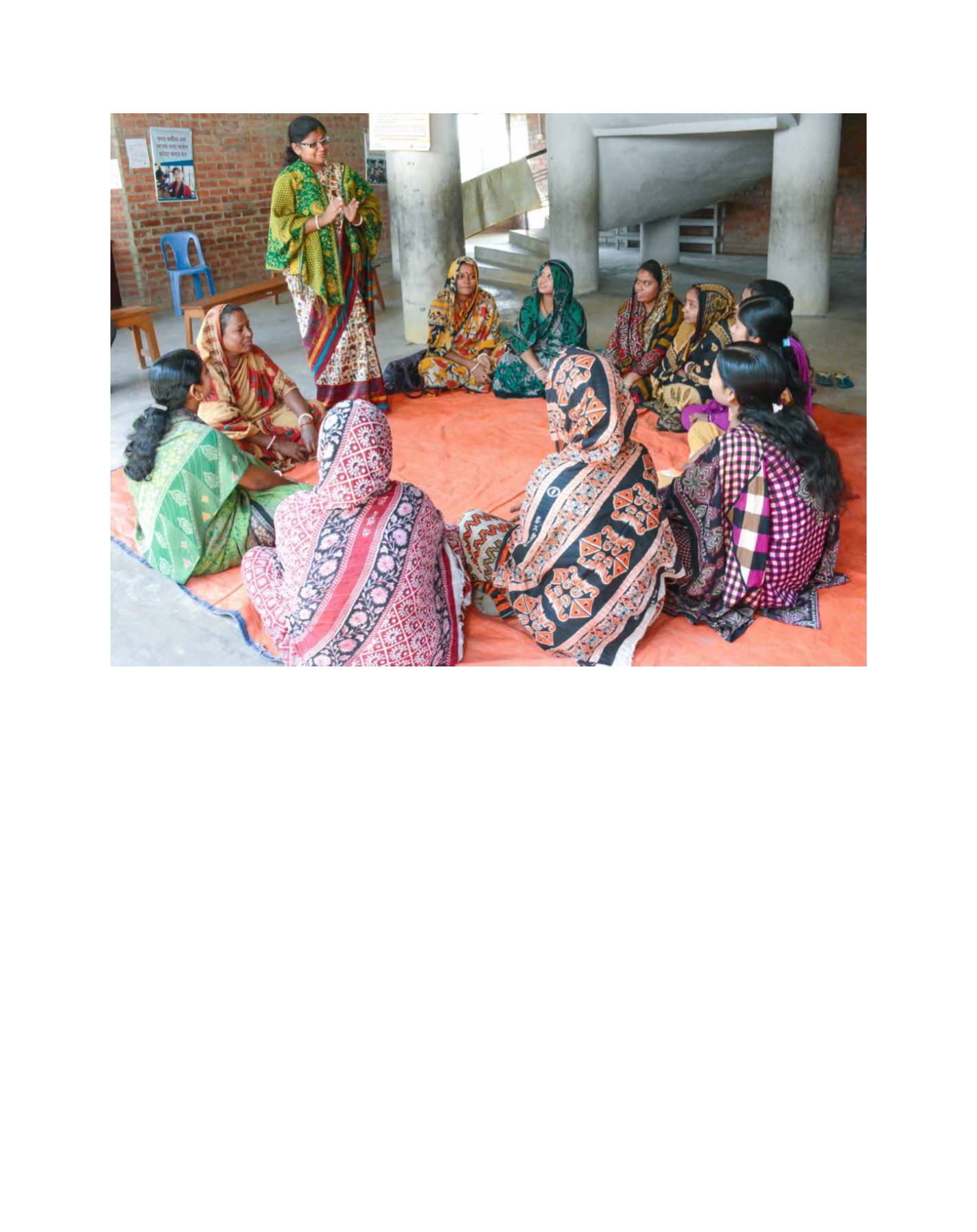

[
] 58
the total workforce in fisheries. They are mostly engaged in
post-harvest operations, mainly in the production of Maldives
Fish – a smoked and dried fish preparation. It may be also
noted that apart from technology and market constraints,
sociocultural norms also determine women’s participation in
economic activities in the region.
In the case of India, national marine fisheries censuses were
carried out in 2005 and 2010. The census data shows that
women constitute the majority of the workforce in fishing-
allied activities. Between the two censuses, women in the
workforce in fishing-allied activities increased from 48 per
cent in 2005 to about 60 per cent in 2010 – an increase
of about 2 per cent per year during 2005-2010. The largest
concentration of women in the workforce is in peeling,
followed by processing and marketing. The data also shows
that women are increasingly participating in other allied activ-
ities such as net mending.
Several factors have possibly contributed to the success-
ful migration of women from a traditional family-oriented
artisanal sector to more market-oriented fisheries activi-
ties. At the top level, various women-centric policies of the
national governments, ranging from training programmes
in skill and capacity-building to rural banking and micro-
finance, have been the positive contributing factors. These
efforts were supplemented by regional and international
organizations such as BOBP, FAO and other international
developmental agencies, bringing both technology and
funds. Finally, non-governmental organizations (NGOs)
and community-based organizations have contributed to
the last mile of connectivity.
At the national level, the 1998 National Fisheries Policy
of Bangladesh identified “Poverty alleviation through crea-
tion of self-employment opportunities and improvement in
socioeconomic conditions of the fishers” as a major objec-
tive. The policy further calls for encouragement of women in
fish culture through training and capacity-building. The more
recent 2014 National Shrimp Policy of Bangladesh has called
for improving women’s participation in shrimp production,
processing and marketing as well as proper implementation
of national and international labour standards in the shrimp
industry. The women’s workforce in the sector is likely to
benefit from such intervention. In addition Vision 2021,
declared by the Prime Minister of Bangladesh, has also called
for improving women’s participation in fisheries to an average
of 20 per cent from the current level. On the other hand,
Grameen Bank, which pioneered microfinance and micro-
credit in 1970 and won the Nobel Peace Prize for its effort in
2006, has helped in unlocking productive resources in rural
Image: S Jayaraj
Building awareness among fisherwomen in Chittagong, Bangladesh
A B
etter
W
orld
















